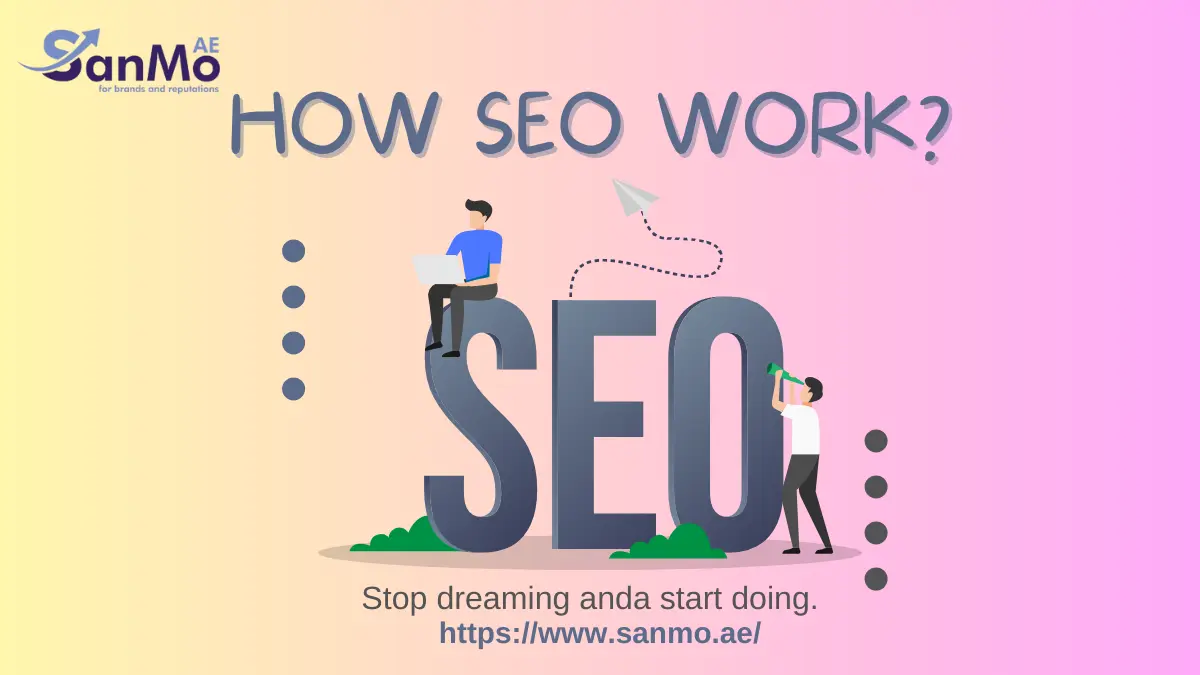Increasing a website’s visibility on search engines like Google, Bing, and Yahoo is the goal of a digital marketing strategy known as search engine optimization, or SEO. Search engines assess and rank relevant websites based on several factors to deliver the best results when a user performs an online search. SEO helps your pages rank higher in search results, get more visitors, and attract more customers by ensuring that your content and website meet these criteria.
Understanding the Basics of SEO
The two main types of SEO are off-page SEO and on-page SEO.
- On-page SEO is the term used to describe optimizations carried out immediately on your website. It includes things like the quality of the content, internal linking, HTML tags (such headers and meta descriptions), and the inclusion of keywords.
- Off-page SEO focuses on activities that happen outside of your website, such as social media engagement, online reputation, and backlinks from other trustworthy websites. Both types are essential for SEO success and should work in tandem to increase your website’s exposure.
Technical SEO also addresses the backend components, such as page performance, mobile friendliness, and site architecture. These technical characteristics make it easier for search engines to efficiently crawl and index websites.
The Function of Search Engines in SEO
Search engines use advanced algorithms to rank pages based on relevancy and authority. Here is a brief description of the process:
- Crawling: Search engines utilize bots, sometimes known as spiders or crawlers, to peruse web sites and gather information. Crawlers follow links from one website to another to locate new and updated content.
- Indexing: After crawling, the contents of every page are stored in a large database, or index. The index is essentially a library of internet content that is available for retrieval when a user searches for pertinent phrases.
- Ranking: When a user types a query, the search engine searches its index to provide the most relevant results. During this ranking process, factors including user experience, site authority, content quality, and keyword relevancy are all considered.
SEO is the process of aligning your website with these guidelines to ensure that your content appears in relevant search results.
Key SEO Components and How They Work
A number of crucial factors impact effective SEO:
- Keyword research: Keywords are terms that people search for on the internet. When you find and carefully apply the right keywords in your content, your website will appear in search results. It’s important to use keywords naturally to avoid keyword stuffing, which might damage your score.
- High-quality: search engines prioritize content that answers user queries. The best material is educational, engaging, and often updated. Good content keeps visitors on your site longer and increases the likelihood of backlinks and shares.
- Backlinks: These external connections pointing to your website from other reliable websites are a crucial ranking factor. They inform search engines that your content is trustworthy and valuable. Building high-quality backlinks may improve your website’s search engine rankings, authority, and referral traffic.
- Technical Optimization: A well-designed website is essential for effective SEO. Secure connections (HTTPS), quick load times, and mobile friendliness are all elements that enhance search engine signal quality and user experience.
- User Experience (UX): Google’s algorithms consider information like time on site and bounce rate that gauges user involvement. A site that is well-structured, easy to navigate, and has clear headers and content improves the user experience and encourages people to stay on it longer.
Various Types of SEO Strategies
While goals and types of content may impact SEO strategies, two common approaches are as follows:
- White-hat: SEO is an ethical method of SEO that prioritizes creating excellent content, improving user experience, and following search engine guidelines. White hat strategies are tenacious and produce results that last.
- Black Hat SEO: Black hat SEO involves modifying SEO strategies, sometimes in violation of search engine standards, to get quick ranks. Among the strategies are keyword stuffing, cloaking, and backlink buying. Black hat SEO is risky and might lead to penalties.
SEO’s Importance for Businesses
Investing in SEO may provide significant benefits for businesses.
- Enhanced Visibility: Better-positioned websites receive more hits, increasing the brand’s visibility and authority.
- Increased Credibility and Trust: When people see that your website consistently receives good ratings, they are more likely to trust your business.
- Cost-effective Marketing: Unlike paid advertising, SEO generates organic traffic, which ultimately reduces advertising costs.
- Improved User Experience: Since it increases engagement and conversions, a seamless user experience is the primary objective of effective SEO.
How to Get Started with SEO
If you’re new to SEO, follow these simple steps to get started:
- Perform Keyword Research: By using tools like Google Keyword Planner, Ahrefs, or SEMrush, you may find relevant keywords with a high search volume and little competition.
- Optimize On-Page Content: Ensure that primary and secondary keywords are included in all of your content, meta tags, headers, and URLs. Make sure the hierarchy and structure of your website are apparent.
- Prioritize Quality material: Provide your audience with interesting, thought-provoking content that addresses their needs and desires.
- Enhance technical aspects: Make sure your website is mobile-friendly, loads fast, and employs HTTPS.
- Create high-quality backlinks: participate in relevant forums and blogs, write guest posts, or get in touch with websites related to your industry to raise your backlink profile.
- Track and Modify: Use tools like Google Analytics and Google Search Console to monitor performance. Because SEO is an ongoing process, maintaining and improving ranks needs frequent adjustments.
To sum up
SEO is an essential digital marketing strategy that helps businesses reach a larger audience by improving their online exposure. It encompasses a variety of strategies, ranging from on-page optimization and keyword research to backlink building and technology improvements. Even though it requires time and effort, SEO is a valuable investment for any business looking to grow online. Over time, it may enhance customer contact, exposure, and trustworthiness.








